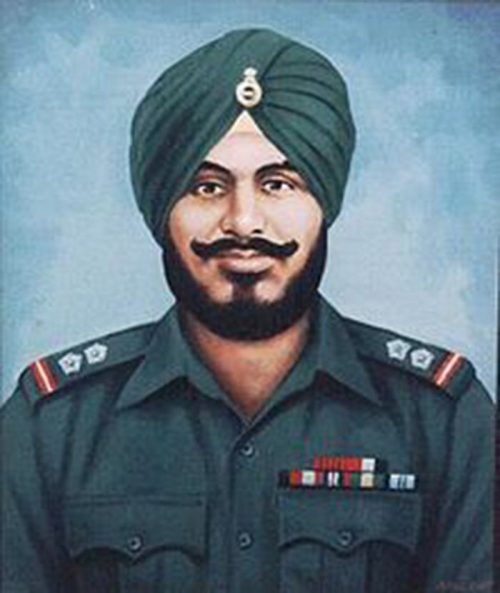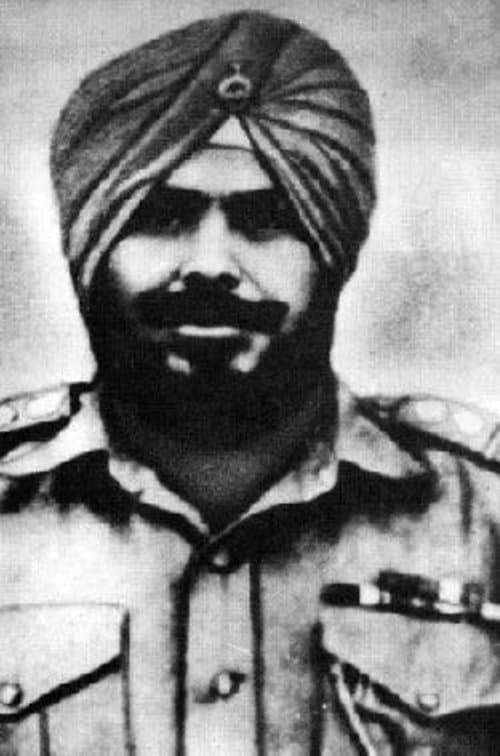Remembering Param Vir Subedar Joginder Singh and His Extraordinary Tale of Bravery
Posthumously awarded India’s highest military award, the Param Vir Chakra, Subedar Joginder Singh’s actions on the battlefield transcended heroism.

“The sentinel hills that round us stand
bear witness that we loved our land.
Amidst shattered rocks and flaming pine
we fought and died on Namti Plain.
O Lohit gently by us glide
pale stars above us softly shine
as we sleep here in sun and rain.”– An inscription at Walong War Memorial in Arunachal Padesh
The month-long Sino-Indian war of 1962 is mostly associated with defeat, but the fierce war did forge many heroes whose incredible acts of courage immortalized them forever. One such shining example of bravery was set by Subedar Joginder Singh.
Posthumously awarded India’s highest military award (Param Vir Chakra), Subedar Singh made the supreme sacrifice while defending Tongpen La (near Tawang in Arunachal Pradesh) during the 1962 Chinese aggression.
Here is the untold story of a soldier whose actions in the battlefield transcended heroism.

Subedar Joginder Singh was born on September 28, 1921, at Mahla Kalan village (near Moga) of Punjab. His parents, Sher Singh Sahnan and Krishan Kaur, farmed their own land. After clearing his 10th-grade examination, he joined the British Indian army’s First Sikh Regiment on September 28, 1936.
Soon after his training was completed, Joginder was sent to Burma where he served with distinction. After India finally got its hard-won independence, his regiment was posted to Srinagar where they fought the Pakistani tribal lashkars (militias) who had attacked Kashmir in 1947-48.
But the battle that would immortalize him in the annals of history would happen during the Sino-Indian War of 1962.

On October 20, 1962, three regiments of the Chinese Army attacked the ill-prepared and tactically-unsound Indian position at Namka Chu on the MacMahon line (the international boundary between India and Tibet). Despite being on the lower ground, the Indian troops offered stiff resistance to the Chinese. However, thanks to obsolete weapons, shortage of ammunition and a virtually non-existent line of communication, they were soon overpowered by the sheer numbers and superior firepower of the Chinese attack.
The Chinese then turned their attention towards the strategically-important town of Tawang in North East Frontier Agency (now Arunachal Pradesh). The shortest approach to Tawang from Namka Chu passed through the Bum-La axis.
To fortify the defence of this axis, a platoon of the 1 Sikh Regiment (under the leadership of Joginder) was immediately moved to a defensive position on IB ridge in the Tongpen La area overlooking the vast Tibetan Plateau.
In the wee hours of October 23, 1962, the Chinese army launched a heavy offensive on the Bum La axis, hoping to break through to Tawang. Supported by artillery and mortar fire, the Chinese troops attacked in three waves, each around 200 soldiers strong, hoping to overwhelm the small number of Indian soldiers they expected to be guarding the IB ridge.
But the Chinese had underestimated the battle acumen and courage of the man leading the small 23-man Indian platoon.

After studying the terrain of the ridge, Joginder and his men had worked day and night in the numbingly cold conditions (they had no winter gear) to build a network of strategically-positioned bunkers and trenches.
In the battle that followed, the advantage provided by this strategy helped Joginder and his men mow down the first wave of better-equipped Chinese with their outmoded Lee Enfield 303 rifles. As ammo was at a premium, he also made his men hold their fire till the enemy were completely in weapon-range.
Stunned by the quick destruction of their first wave, the next wave of Chinese troops hurled themselves at the Indian soldiers, all-guns-blazing, but they were dealt with similarly. However, by then, the platoon had lost half its men.
Joginder had been badly wounded in the thigh but he refused to be evacuated. Though out-manned and out-gunned, the tenacious soldier was not willing to withdraw an inch and continued to fight with all he had.

Inspired by their leader’s gallantry and tenacity, the platoon stubbornly held on to its ground. As the furious Chinese started their third wave of attack, Joginder himself manned a light machine-gun, screaming instructions and adjusting defensive positions. The enemy onslaught, however, continued to advance despite heavy losses to their number.
When the platoon had run out of ammunition, Joginder and the remaining soldiers fixed their bayonets and unmindful of certain death, charged headlong at the Chinese for a last-ditch attack. As the regiment’s piercing battle cry ‘Bole So Nihal, Sat Sri Akal” rang through the air, Joginder’s gallant band of soldiers fought ferociously, bayoneting scores of shocked Chinese soldiers before they were overpowered.
After four hours of fierce fighting, a mortally wounded Joginder was taken as a prisoner of war. He later died in Chinese captivity. Of the 23 men who formed Joginder’s platoon, only three survived — that too because they had been sent by their leader to fetch more ammunition from the main army camp.

For his selflessness, dogged determination and raw courage in the face of the enemy, Subedar Joginder Singh was posthumously awarded independent India’s highest wartime gallantry award, Param Vir Chakra. The last line on his citation reads as follows:
“Throughout the action, Subedar Joginder Singh displayed devotion to duty, inspiring leadership and bravery of the highest order.”
On learning that Joginder had been awarded the Param Vir Chakra, the Chinese army, in a rare mark of respect, recognised his valour in battle by repatriating his ashes with full military honours to the regiment on May 17, 1963. Later, in a poignant ceremony at the Sikh Regimental Centre at Meerut, his ashes were handed over to his widow Gurdial Kaur and young children.
Besides a memorial statue near the District Collector’s office in Moga, the Indian Army has built a monument in Joginder Singh’s honour at the IB ridge while the Shipping Corporation of India has named one of their vessels after him. And so he lives on — in war memorials and monuments, in the snowy peaks where he defended his motherland so fiercely, and in the proud reminiscences of his dearly-loved children.
Interestingly, the life of the war hero will also soon be the subject of a Punjabi biopic, with singer-actor Gippy Grewal playing the leading role.
Also Read: The Little Known Story of Major Somnath Sharma, India’s First Param Vir Chakra Recipient
Like this story? Or have something to share? Write to us: [email protected], or connect with us on Facebook and Twitter.
NEW: Click here to get positive news on WhatsApp!
If you found our stories insightful, informative, or even just enjoyable, we invite you to consider making a voluntary payment to support the work we do at The Better India. Your contribution helps us continue producing quality content that educates, inspires, and drives positive change.
Choose one of the payment options below for your contribution-
By paying for the stories you value, you directly contribute to sustaining our efforts focused on making a difference in the world. Together, let’s ensure that impactful stories continue to be told and shared, enriching lives and communities alike.
Thank you for your support. Here are some frequently asked questions you might find helpful to know why you are contributing?


This story made me
-
97
-
121
-
89
-
167











